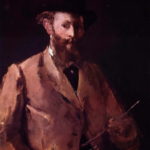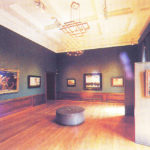Искусство тропической Африки
Summary. African art
Typology. System. Evolution
In historical terms, art among the peoples of Tropical Africa is one of the least studied phenomena in world artistic culture.
The first references to African art occur in the works of travellers and ethnographers (H. Barth, G. Schweinfurth and L. Frobenius). At the end of the 19th century and the beginning of the 20th. research works on the art of Benin appeared (Ch. Read and O. Dalton, Pitt-Rivers and F. von Luschan). Round about 1905, the study of traditional art began, mainly wood sculpture (C. Einstein, V. Matvei and E. von Sydow). In the Tens and Twenties, interest in African art was particularly stimulated by European practice. Later, the line of approach to African art gradually changed. After the end of the 40s, we see an increasingly differentiated approach to the study of various ensembles, schools of art, local and, finally, individual styles.
In the Fifties and Sixties, African art attracted even more attention. The profound influence exerted by it on the contemporary artistic process was becoming obvious and its importance was being recognised as a historical document that made it possible to "interpret the various aspects of African culture from within". At the same time, the history of artistic culture became of interest in the African countries themselves. This was directly connected with the general problems of cultural construction, the aims of contemporary art, the growth of national self-awareness and the formation of a world-outlook.
During the Sixties, many scholarly and popular works of African art were published abroad. In these, as before, monuments of traditional creative art were studied as a local phenomenon, outside history and detached from the archaic strata, that is, the complexes of ancient and medieval art. In spite of a considerable shift in the overlapping areas of African studies, the art of tropical Africa is still considered unamenable to diachronic research.
From the beginning of the Sixties, research into various aspects and centres of African art in its historical development has been the main subject of our work. We have been investigating the stylistic evolution of rock painting, the genesis of the ancient and medieval artistic cultures, aspects and functions of the traditional graphic arts and the emergence of contemporary professional art in the independent African countries. As a result, we have identified certain chronological and stage strata, and parameters common to the materials that have made it possible to undertake the systematic analysis and retrospective reconstruction of the creative process.
The two-part structure of the book corresponds to the synchronic and diachronic aspects of the research. Part 1, based on the morphological analysis of specific monuments and fundamental typological series, contains a general classification and systematisation of the material. Research brings to light the existence of a single cultural-historical substratum, a system of interdependence between local schools of art and ensembles, and a pattern in the spectrum of regional styles. At the same time, the collective nature of tribal art is clarified, as well as its organic ties with the mythological context and with social functions. Analysis of the surviving forms of ancient and traditional art makes it possible to conclude that special regional characteristics form under the influence of changing factors - social and ethic, and. later, individual; that the unity of the artistic substratum is determined by social functions conditioned by stage, whereas the special local characteristics perform an ethno-differentiating function.
In Part 11, on the basis of the division, carried out here for the first time, into general periods, the consecutive stage layers are subjected to systematised diachronic analysis and the more general tendencies are ascertained in the artistic development of the Tropical African peoples from the most primitive to the present times. The following are examined in conformity with the dynamics of cultural-historical development: the genesis and evolution of the early, primitively naturalistic, realistic and abstract forms of art (the primaeval communal era); the development and emergence of the mature ideoplastic forms of the traditional clan and tribal art (the era of class formation); the origin and evolution of professional crafts, or "court" art (early class societies); the problems of the emergence of contemporary individual professional art in the independent African countries.
During research into primitive art, certain common general laws of artistic development are brought to light: the complex, spiral path of stylistic evolution, expressed in the periodic growth and decline of realistic and abstract trends. Analysing the material of traditional art, we come to the conclusion that its inherent forms, acquiring the universal character of symbol or sign, correspond to the preliteracy period and are the product of evolution, the result of prolonged selection and economy of graphic resources.
The reconstruction of the history of African graphic art and comparison with similar aspects of art in other regions and the study of factors determining the basic parameters of the artistic process demonstrate that certain stages of cultural-historical development correspond everywhere to definite aspects and forms of creative activity.
The general picture of the development of art among the peoples of Tropical Africa invalidates the theories according to which African art culture, viewed outside its historical context, is evaluated either as the result of stagnation, or as an exclusive phenomenon, the offspring of a special Black spirit.










Похожее
Рогир ван дер Вейден
Веронезе (Паоло Кальяри)
Ян Вермеер